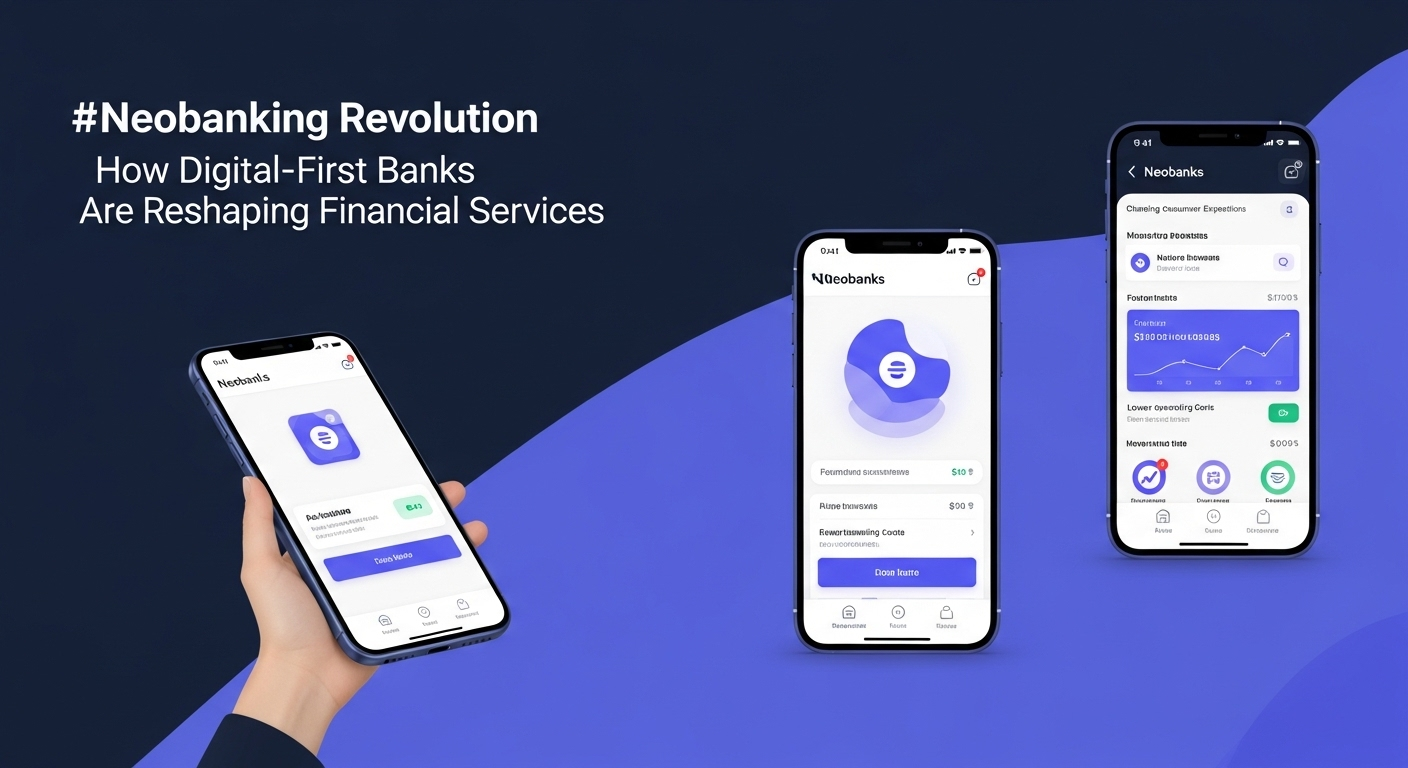
Neobanking Revolution: How Digital-First Banks Are Reshaping Financial Services
The banking industry is experiencing a seismic shift as neobanks—digital-first financial institutions—challenge the dominance of traditional banks with innovative technology, superior user experiences, and customer-centric approaches. These agile financial service providers are not just digitizing existing banking processes; they’re reimagining what banking can be in the digital age.
From their humble beginnings as simple mobile apps offering basic banking services, neobanks have evolved into comprehensive financial platforms that serve millions of customers worldwide. This transformation represents more than just technological advancement—it’s a fundamental reimagining of the relationship between financial institutions and their customers.
What Are Neobanks?
Neobanks are digital-only financial institutions that operate without traditional physical branch networks. They deliver banking services entirely through mobile applications and web platforms, leveraging cloud computing, artificial intelligence, and modern software architecture to provide seamless financial experiences.
Unlike traditional banks that have digitized their existing processes, neobanks are built from the ground up with digital-first principles. This fundamental difference allows them to move faster, innovate more freely, and focus entirely on customer experience without the constraints of legacy systems and processes.
Key Characteristics of Neobanks:
- Digital-Only Operations: No physical branches, all services delivered through digital channels
- Mobile-First Design: Intuitive mobile applications as the primary customer interface
- Real-Time Processing: Instant account updates, notifications, and transaction processing
- Data-Driven Insights: Advanced analytics to provide personalized financial guidance
- API-First Architecture: Open platforms that integrate easily with third-party services
- Streamlined Onboarding: Digital account opening processes that take minutes, not days
The Neobank Advantage: Why Customers Are Switching
Traditional banks, burdened by legacy infrastructure and regulatory complexity, often struggle to deliver the seamless experiences that modern consumers expect. Neobanks have identified and addressed these pain points with innovative solutions.
Superior User Experience
Neobanks prioritize user experience above all else. Their mobile applications are designed with modern UX principles, featuring intuitive navigation, clean interfaces, and powerful functionality that makes banking tasks simple and enjoyable.
Key UX Innovations:
- Instant Notifications: Real-time alerts for all account activities
- Spending Insights: Automatic categorization and analysis of expenses
- Goal Setting: Built-in tools for savings goals and financial planning
- Seamless Transfers: One-tap money transfers between accounts and contacts
- Biometric Security: Fingerprint and face recognition for secure, convenient access
Transparent Pricing
One of the most significant advantages neobanks offer is pricing transparency. Traditional banks often have complex fee structures with hidden charges that surprise customers. Neobanks typically offer straightforward pricing with minimal fees.
Common Neobank Pricing Benefits:
- No Monthly Maintenance Fees: Many neobanks offer free basic accounts
- Transparent Foreign Exchange: Clear, competitive rates for international transactions
- No Minimum Balance Requirements: Access to banking services regardless of account balance
- Fee-Free ATM Networks: Partnerships with ATM networks or fee reimbursements
- Clear Overdraft Policies: Transparent overdraft protection with reasonable fees
Technology Stack: The Foundation of Neobank Success
The technological foundation of neobanks is fundamentally different from traditional banks. Built on modern cloud infrastructure and microservices architecture, neobanks can innovate rapidly and scale efficiently.
Core Technology Components
Cloud-Native Architecture
Neobanks leverage cloud computing platforms to achieve scalability, reliability, and cost efficiency. This approach allows them to:
- Scale Dynamically: Handle varying transaction volumes without infrastructure constraints
- Deploy Globally: Expand to new markets quickly with cloud infrastructure
- Ensure Reliability: Benefit from cloud providers’ robust disaster recovery and uptime guarantees
- Control Costs: Pay only for resources used, avoiding large upfront infrastructure investments
API-First Development
Neobanks design their systems around APIs, which provides several advantages:
- Third-Party Integration: Easy connection with fintech partners and service providers
- Developer Ecosystem: External developers can build applications on the platform
- Internal Efficiency: Different parts of the organization can access services through standardized interfaces
- Future-Proofing: New channels and interfaces can be added without changing core systems
The Future of Neobanking
As neobanks continue to evolve, several trends are shaping their future development:
Embedded Finance
Neobanks are increasingly embedding their services into other platforms and applications, allowing customers to access banking services without leaving their preferred apps or websites.
Embedded Finance Applications:
- E-commerce Integration: Payment and lending services built into online marketplaces
- Gig Economy Platforms: Banking services integrated into freelance and ride-sharing apps
- Business Software: Financial services embedded in accounting and business management tools
- Social Platforms: Payment and money transfer capabilities within social media applications
Conclusion: The Neobank Revolution Continues
The neobank revolution represents more than just technological disruption—it’s a fundamental shift toward customer-centric financial services. By prioritizing user experience, transparency, and innovation, neobanks have demonstrated that there’s a better way to deliver banking services.
The future of banking belongs to institutions that can deliver exceptional customer experiences while maintaining the highest standards of security, compliance, and financial responsibility. Whether they’re called neobanks, digital banks, or simply banks, the winners will be those that put customers first and use technology to enhance rather than complicate the banking experience.